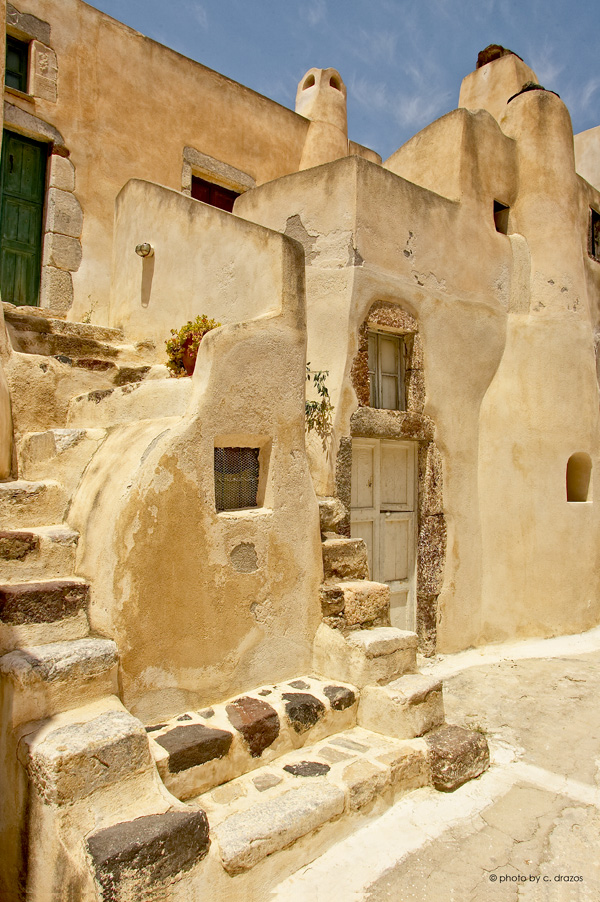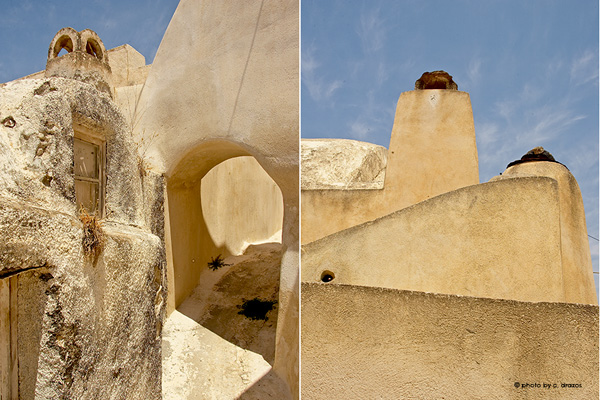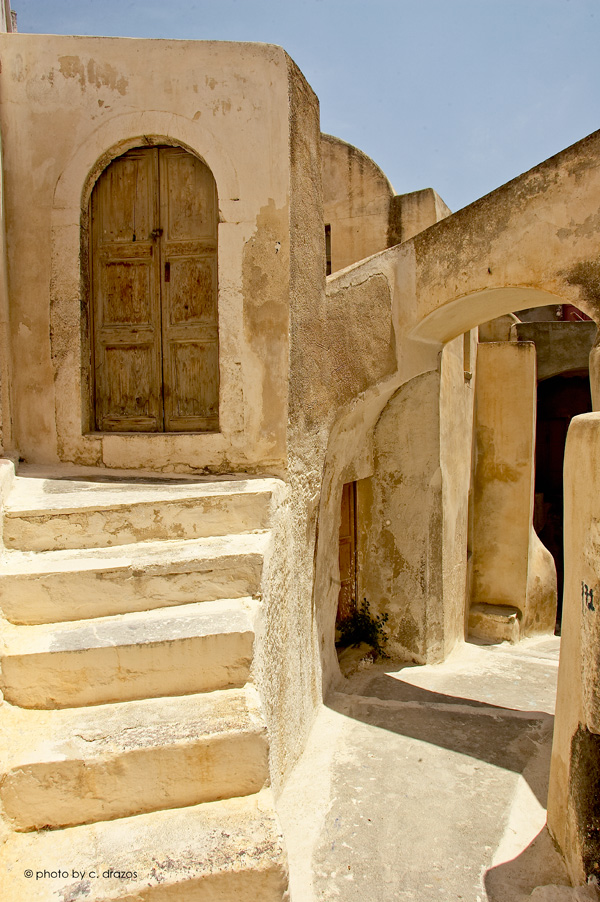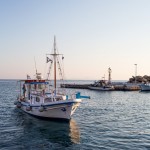If Gaudí lived in Greece…




…he would had chosen to live at Emporio village, in Santorini. This beautiful settlement that once used to be one of the island’s castles and seems to have been made of modeling clay is an example of the traditional way of planning construction in the Aegean islands. I am sure that he would have loved the curved walls that make the houses look as if the form the same unified construction.
There are so many stories on the existence of those mild curves in the Aegean architecture:
Some say that when the Wind got jealous of the beautiful round pebbles that the Sea created after her visits to the shores, he decided to become a sculptor by creating the very same round effect to houses, arches and chimneys.
Others say, that when the old habitants of the islands started building their houses, they tried to imitate the same curved lines of the hills or the sea waves: they were wise enough to notice that you can’t find real straight lines in nature and that nature has its own way of balancing proportions and shapes..
Yet, some others say that it was Pan, the ancient Greek God who made those walls curvy, so that the people of the islands won’ t hurt themselves by falling onto them when they are too dizzy from dancing and too drunk from drinking the local sweet wine.
While I don’ t know which one of these stories is true, I do think that the traditional architecture of the Aegean islands is a profound expression of the gentleness and open- hearted personalities of the island people.
They, as well as their houses, are easy to approach. Yet they won’t tell you all their secrets; to earn those you will have to wait in patience and observe the lines of the horizon as they fade out between the two distant islands far away or behind those hills of gold, until you become an islander yourself…


words: maria alipranti
photos: christos drazos











Amazing photography! I been to Emporio and it’s magical place everyone should visit once in life.
Ti orea….
Emporio, love to walk around there…….
I think Gaudi would love this bathroom in Perissa as well.
https://www.dropbox.com/sh/fqs46tspuphbyjv/VSidEuazY5
https://www.dropbox.com/home/Bathroom%20Casa